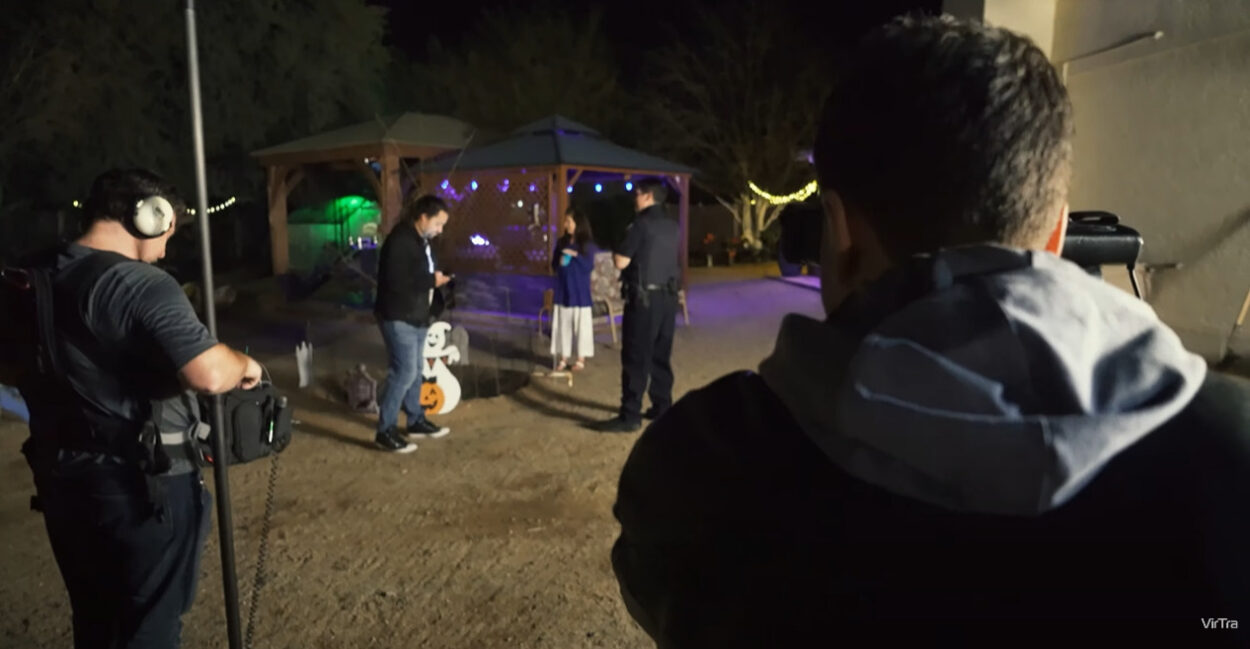
The biggest part of a training experience is its content. Big screens and fancy headsets may be flashy and eye-catching, but without the content to learn from, they won’t do much. Making high-quality scenarios that users can learn from involves many steps, extensive planning, and rigorous testing,
Creation with the Client in Mind
Before anything else, it must be determined what kind of scenarios our training partners will benefit from the most. Using suggestions from clients and keeping current affairs in mind, treatments are written by the SME’s. For example, in the wake of the George Floyd incident, the Content Department immediately began working on the “Duty to Intervene” videos and scenarios. It then goes to the director to be made into a working script and shot lists.
Since the addition of the V3™ Volumetric Capture Studio, VirTra will be capturing real people and inserting them into scenarios as 3D objects that can be used on both screen-based and VR platforms. It tackles the limitations of CGI. This ensures that the environment and characters are believable, thus leading to a more valuable training experience.
Professional Filming Sessions
Where some simulation companies use video filmed from a cell phone, VirTra involves professional equipment and actors. CGI used in most training simulations is simply not realistic enough to elicit emotional responses. In fact, some CGI characters “speak” without their lips even moving. Having a real person shown on-screen increases sympathetic response and more closely mimics real life.
The VirTra Difference involves professional equipment and paid actors. These filming sessions can take hours or sometimes multiple days to ensure footage acquired is up to standard. In-house subject matter experts who have law enforcement and/or military experience are on the set. This ensures the content being filmed will have relevance and realistic actions.
The End Product
After filming is wrapped up, the next step is editing and creating the dozens of branching options. Situations in the real world are fluid and evolving, so our scenarios are designed this way too. During an active shooter event, the suspect may drop their weapon and surrender, or begin firing at the officer. A seemingly calm person could pull a knife if the wrong words are used to communicate. All these possibilities must be edited and programmed.
Upon completion, scenarios are added to existing simulators and all new ones assembled going forward. Some scenarios and training videos are used in tandem with V-VICTA® curriculum. This coursework is NCP-certified by IADLEST and includes training manuals, testing materials, and more. We want to take the hard work out of the learning process so instructors can get their lessons right out of the box.
If you are interested in adopting this technology, contact a product specialist. Check out the video below for a quick rundown of how just a single scenario is filmed in a professionally organized manner.
Recently Published
Join Our Newsletter







